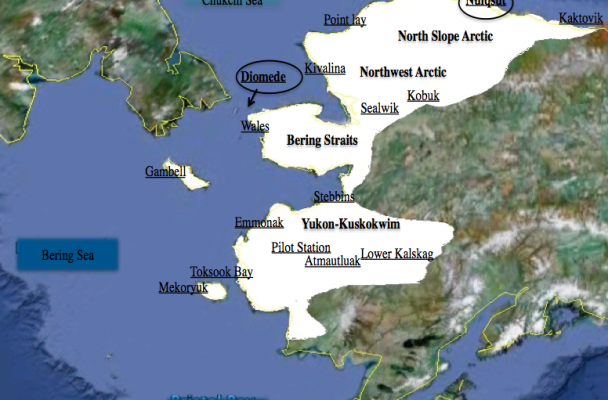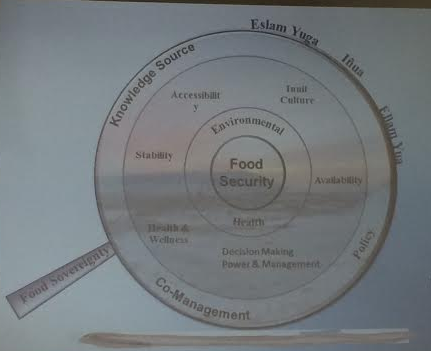
Alaska’s branch of the Inuit Circumpolar Council is building a report to assess and address food security, and insecurity, from a traditional perspective.
“Food Security” has become a buzzword, and Carolina Behe, who presented the project Tuesday at Kawerak’s Regional Conference in Nome, says the term now has over 800 definitions. But the Inuit people of Alaska see the Arctic holistically — the health of culture directly connects to the health of ecosystems. The goal of the project is to define food security and insecurity, identify what drives it, and create a framework for how to address it — all while keeping the Inuit perspective central.
Traditional knowledge was gathered from over 100 contributing authors spanning 15 villages from the Yukon-Kuskokwim Delta up to the North Slope. However, the driving factors for food security were identical across the regions. To represent it, they designed a drum diagram, labeling the different parts. At the center of the drum is food security characterized by environmental health; the handle is food sovereignty; around the edges, tools like traditional knowledge sources, co-management and policy; and the sinew holding it together is the spirit of all that is within the Arctic.
“The advisory committee really wants me to stress here that if any one piece of this is gone, or if any one piece of this is not very strong or missing from the drum, then food insecurity exists,” Behe said.

To address food insecurity, the ICC-Alaska report calls for increasing co-management and forming an Inuit food security council that would move away from single-species management strategies.
“So for example, with walrus, you know about the walrus stomach content, you know about sea ice thickness, you know about how much food somebody needs, you know about weather conditions, the wind, even salinity, all of those things have to be considered,” Behe said. “That includes what’s going on with ice seals and all of this information as opposed to just the population of walrus.”
Other recommendations include developing regional research protocols, where a region has the authority to approve or deny research projects taking place on their land.
A few contributing authors to the report were present at the session, offering suggestions to refine language before the project is shared with tribal councils and state and federal governments next month. Behe says the report may be used as a model for other nations within the Inuit Circumpolar Council.
